本文由 Barozzi Veiga 授权mooool发表,欢迎转发,禁止以mooool编辑版本转载。
Thanks Barozzi Veiga for authorizing the publication of the project on mooool, Text description provided by Barozzi Veiga.
Barozzi Veiga:2011年,Barozzi Veiga赢得了瑞士洛桑新艺术区总体规划的国际竞赛——10号站台,随后便设计并建造了该洛桑艺术博物馆。
作为城市策略,该规划设计主要包括新的博物馆建筑,以及围绕着新博物馆的公共广场空间。其广场沿场地延伸,与现有的火车站广场相连,构成了新的连续性主公共空间,而新建筑则成为了城市生活的框架和洛桑新公共艺术中心的容器。
Barozzi Veiga:In 2011 Barozzi Veiga won the international competition for the definition of a masterplan for the new Art District in Lausanne, Switzerland – Platform 10 – and subsequently designed and built the Musée cantonal des Beaux-Arts Lausanne.
As an urban strategy, the masterplan implements a new structuring void, a public square around which the new museums gravitate. The void stretches along the site and, being connected to the existing train station’s square, it constitutes a new continuous main public space. The new architectures become the frame of the urban life of the city and the containers of the new public art centre of Lausanne.

洛桑艺术博物馆位于该市南部边缘,是一个平行于铁轨的纵向单体建筑,它在保护城市空间免受火车滋扰的同时,也定义了城市空间。该项目在现有的条件下,成功承载并传达了场地的记忆,其严格务实的几何形式和硬朗、锋利的线条,正呼应了从前的工业条件,而且,设计通过保存特定的片段完美呈现了该地的历史记忆。设计保留了部分原始大厅,并将其改造为项目的中心部分,旧的拱形窗户也成为了铁路侧建筑立面的主角,进入门厅后,你就能感受到它作为新建筑空间序列的实质性组成部分充分发挥的作用。
The Musée cantonal des Beaux-Arts Lausanne takes place on the southern edge as a longitudinal monolithic volume, parallel to the rails, defining the urban space while protecting it from the trains’ nuisances. Embracing this condition, the project carries and expresses the memory of the site, echoing the former industrial condition with pragmatic forms, rigorous geometry and hard, sharp lines. Moreover, the memory of the place is achieved through the preservation of specific fragments. The design preserves part of the original hall and transforms it as a central piece of the project. The old arched window becomes the main protagonist of the building façade from the railway and, once within the foyer, it reveals its full role as a substantial structuring component of the new building’s sequence of spaces.
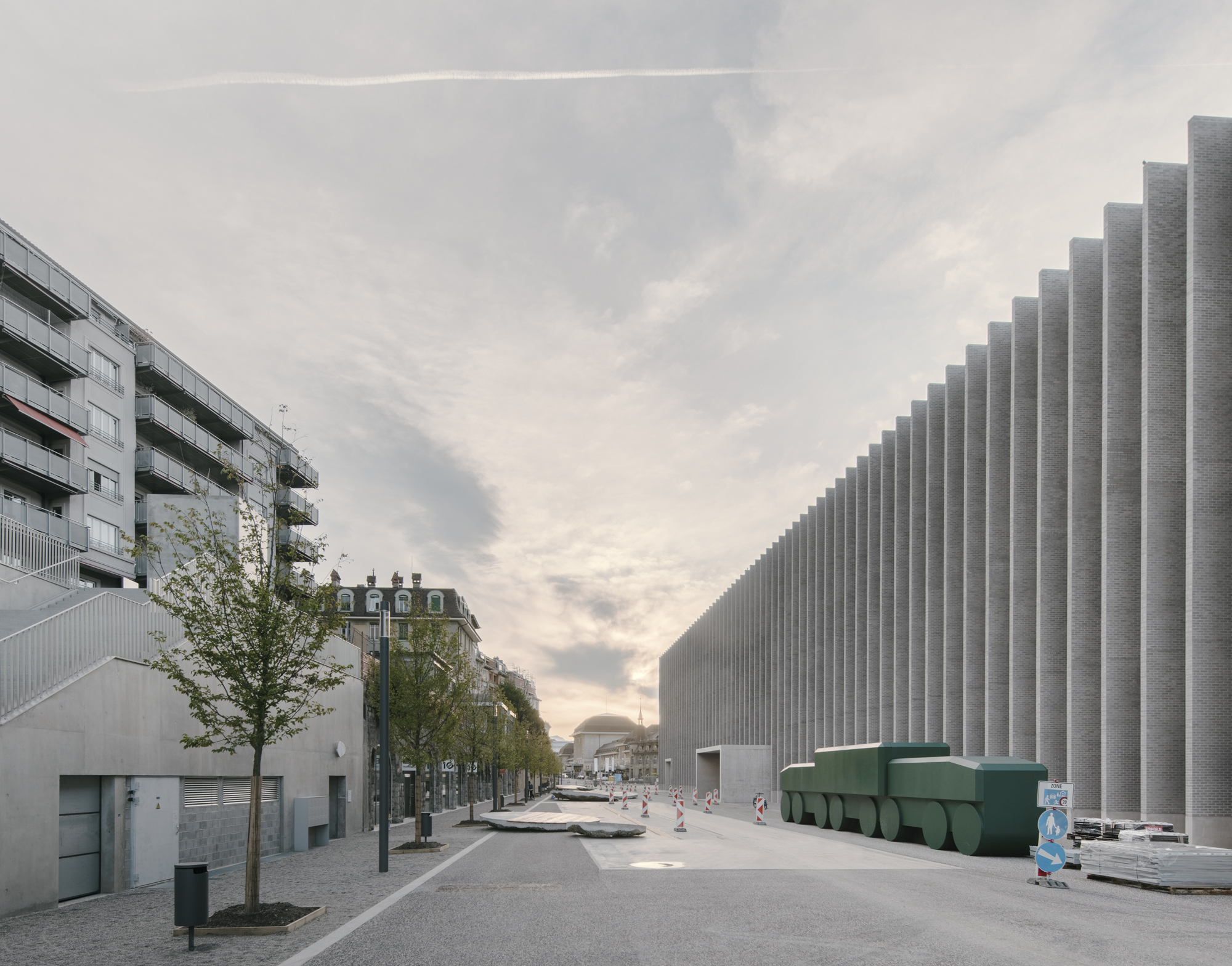
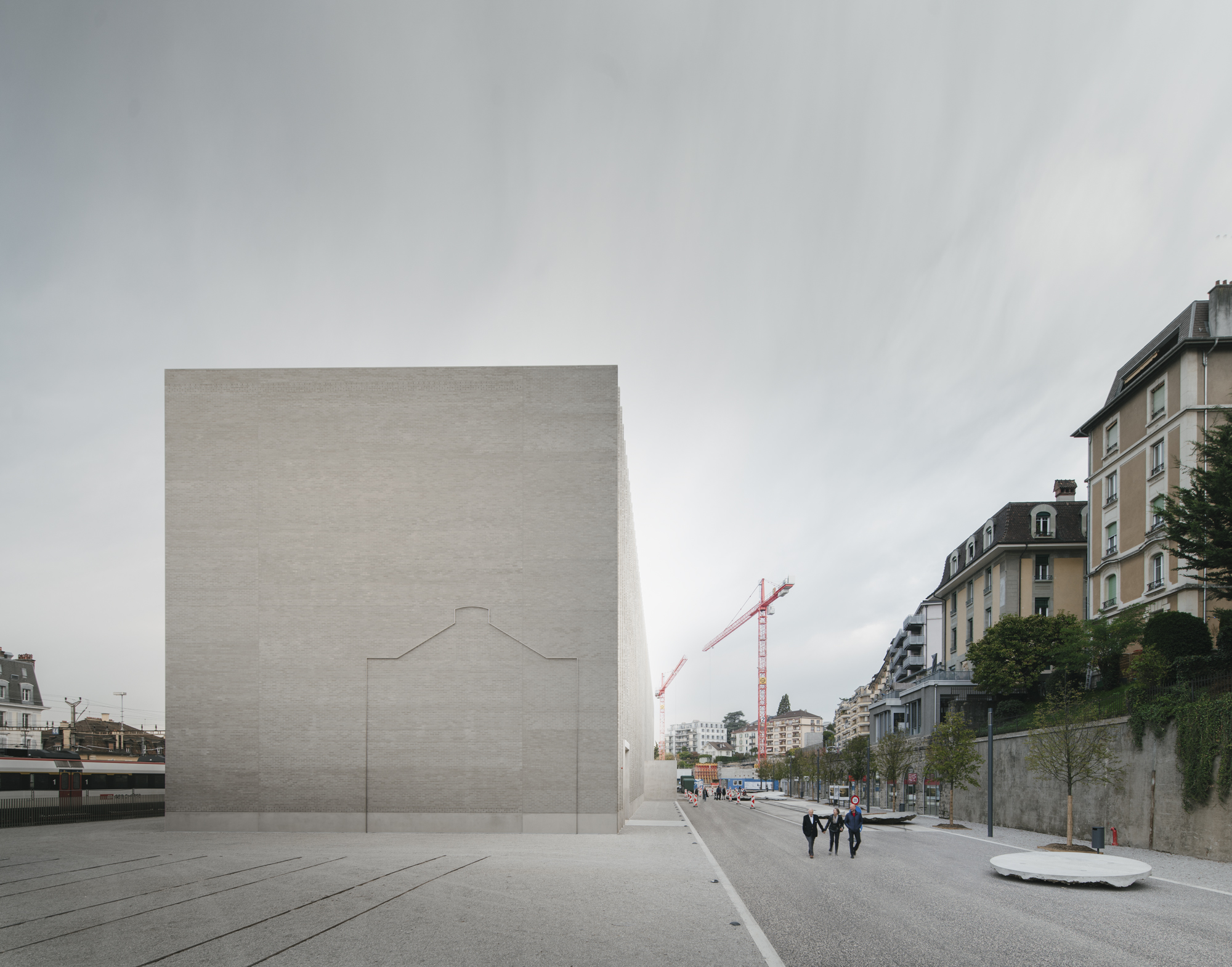
博物馆共分为三层,门厅的连续空间将它们互相连接起来,构成了其循环流线和整个项目。
The museum is organized on three floors connected by the continuous void of the foyer that structures the circulation and the program.


底层作为公共广场的延伸,容纳了多个主要公共空间,如咖啡馆、书店、礼堂等。这一层的立面采用的是多孔设计,这样可以让这些内部功能空间与广场的外部公共空间保持连续性。
The ground floor developed as the extension of the public square and shelters the main public programs such as the café, the bookshop, the auditorium etc. The façade on that level is very porous in order to allow for these internal functions to be in continuity with the exterior public space of the square.

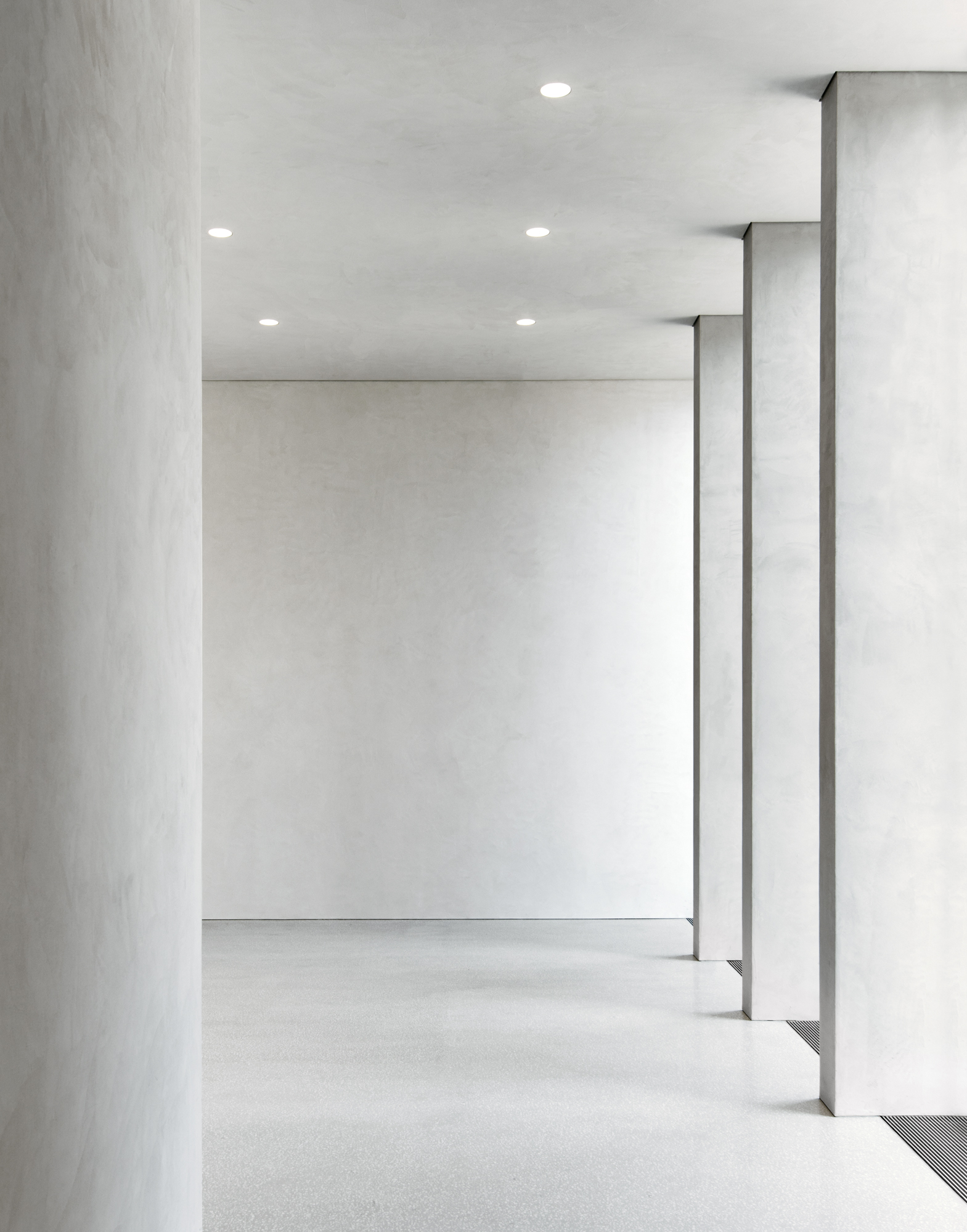
博物馆二层的大厅两侧分设了两个展览空间,东面是永久画廊,西面是临时画廊。它们都可以通过单独的连续游览或平行游览进行参观,而这主要归功于建筑中独立的游览线路,它可以满足未来的综合展览和小型胶囊藏品展等各种需求。
On the higher levels, on both sides of the foyer, take place the exhibition spaces. The permanent gallery to the east is separated from the temporary gallery to the west. They can be visited with a single continuous tour or in parallel tours, thanks to independent vertical circulations which allow future comprehensive exhibitions as well as smaller capsule collections.
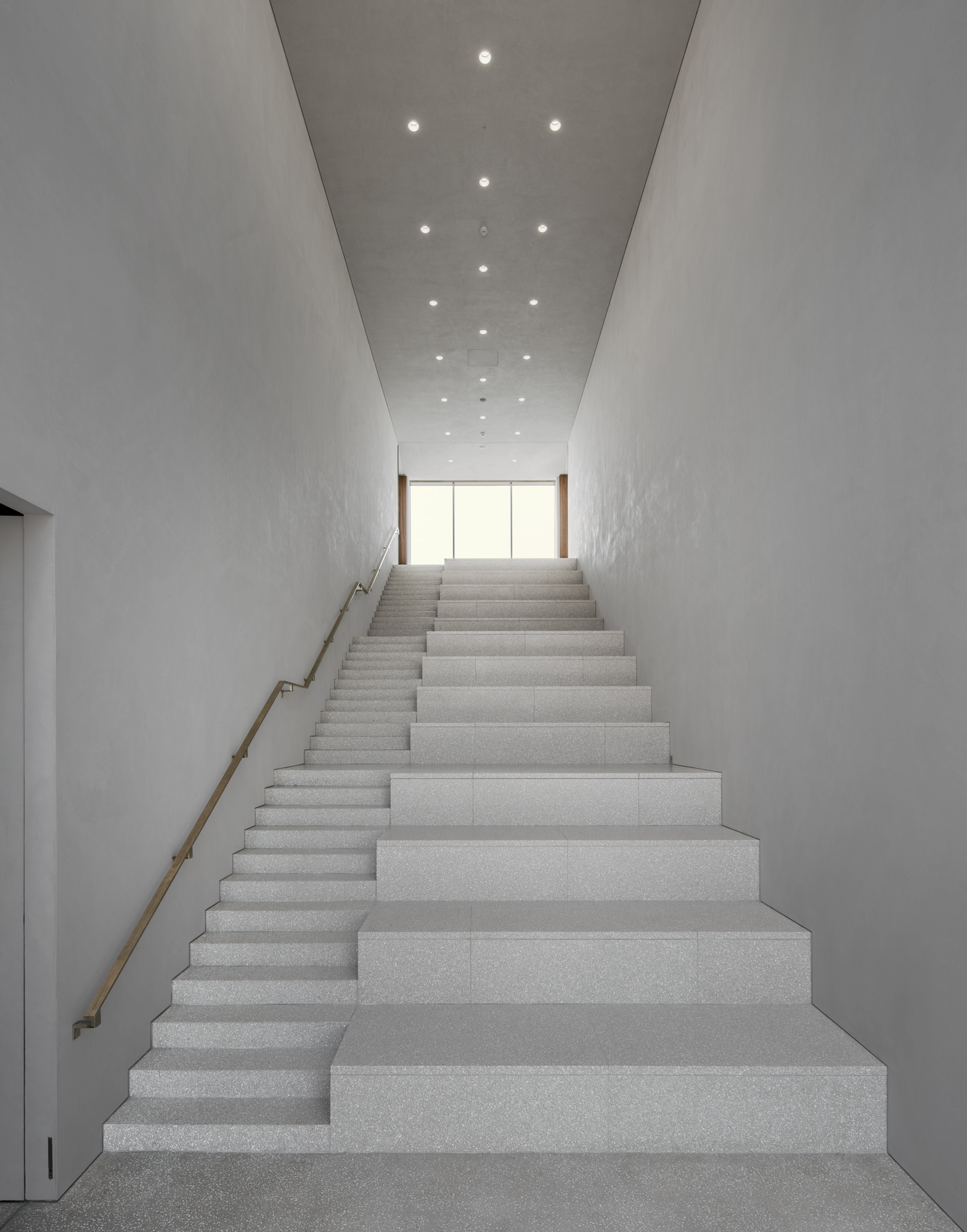
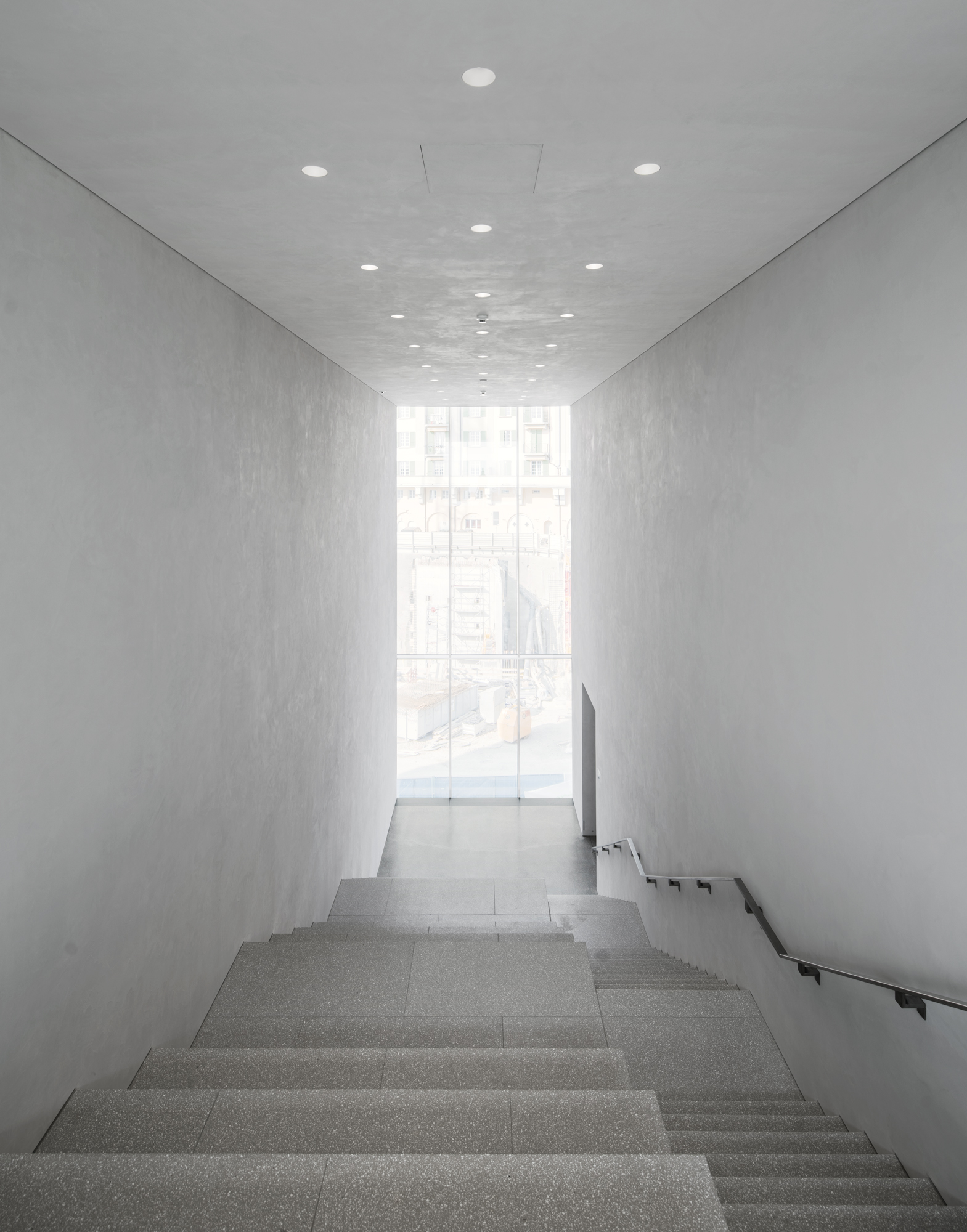
博物馆最上层通过北向的模块化棚屋进行采光、过滤和调整太阳光线。这些棚子内部设有百叶窗系统,可以精细地控制进入房间的光量,或营造出昏暗的氛围,为艺术作品提供最佳展览条件。
The upper floor is naturally lit up through north oriented modular sheds, designed to filter and adjust the solar light. These sheds have an internal system of blinds to allow a meticulous control of the amount of light entering the rooms as well as the possibility of a dimmed atmosphere to offer optimal conditions for the art pieces.
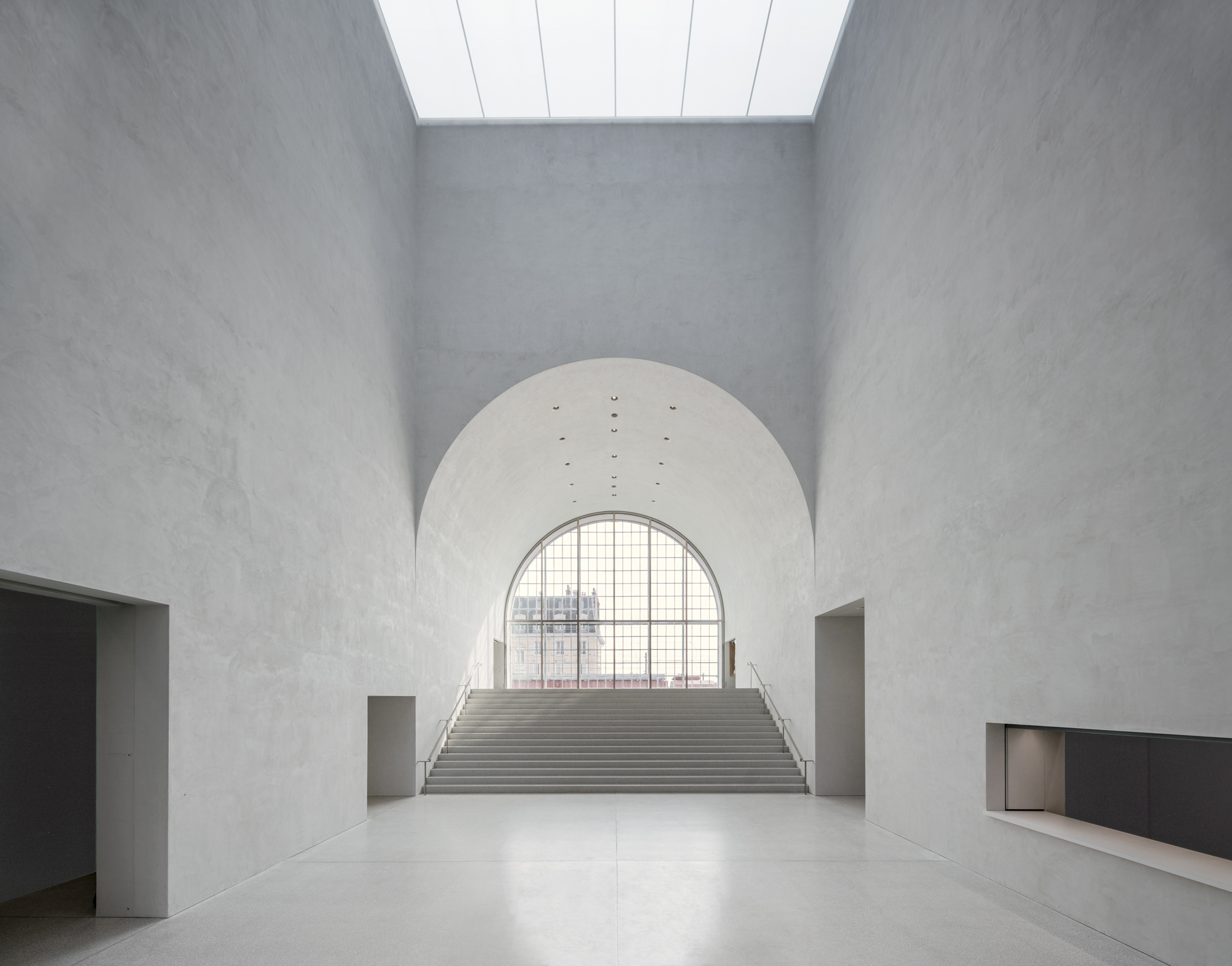
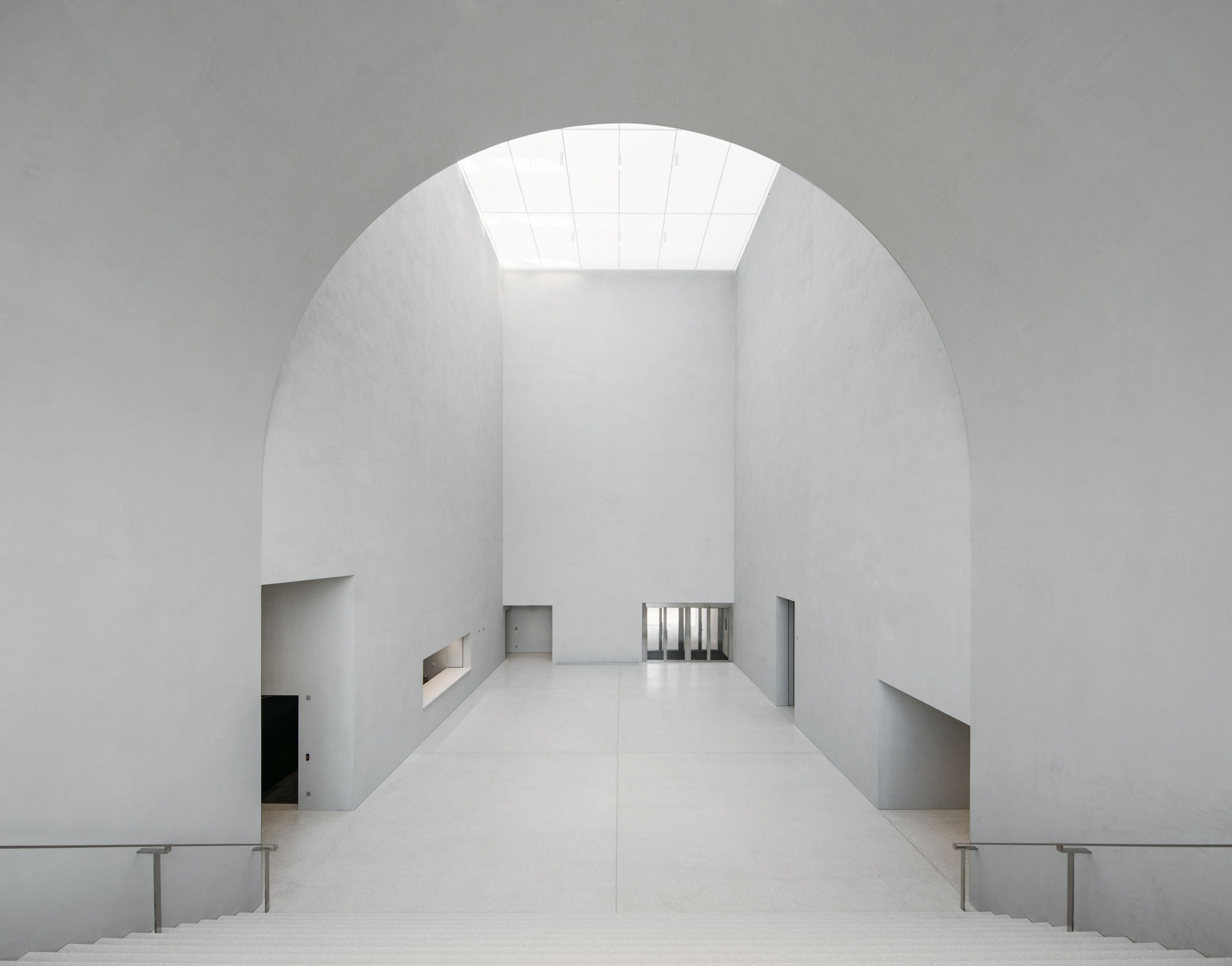
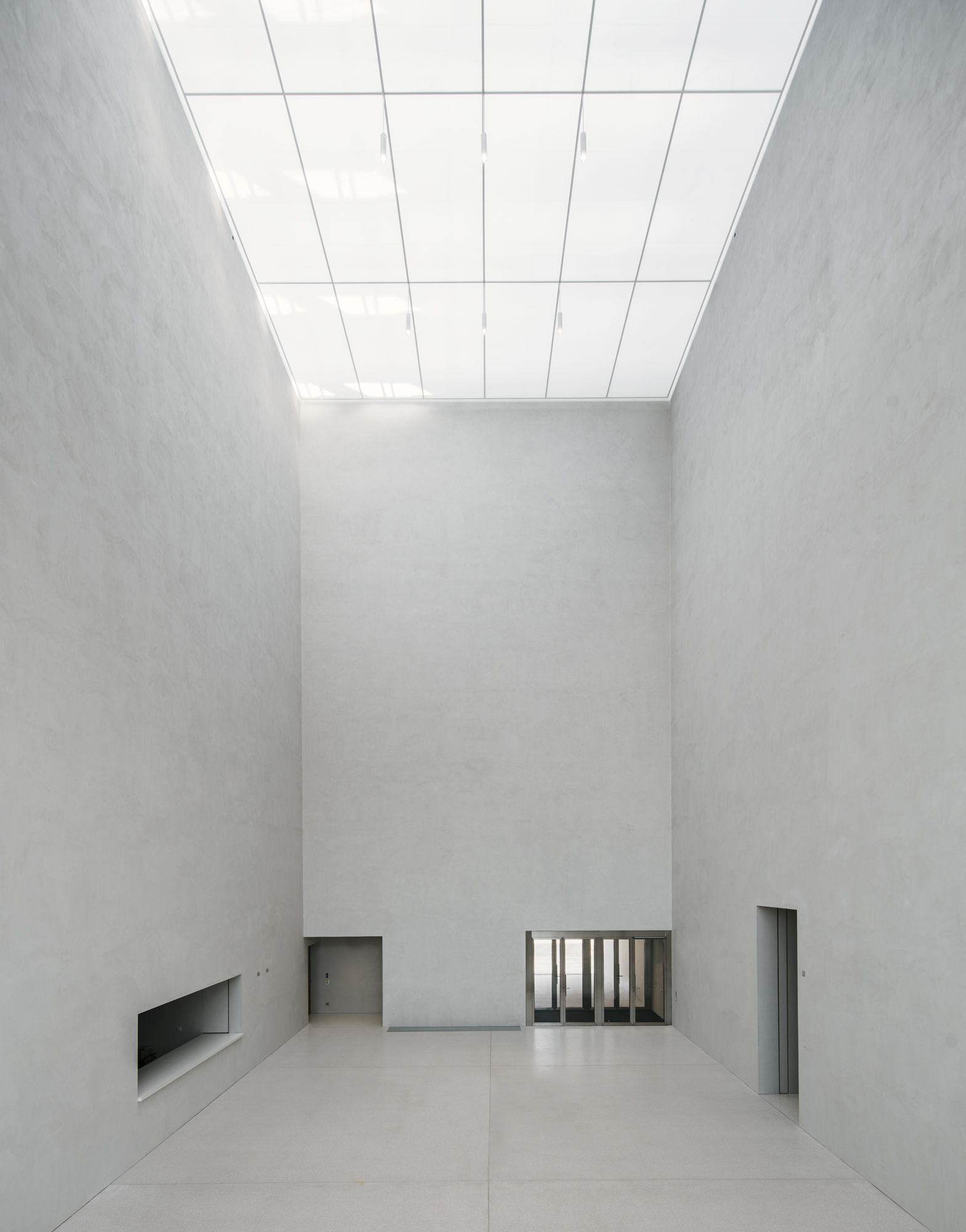
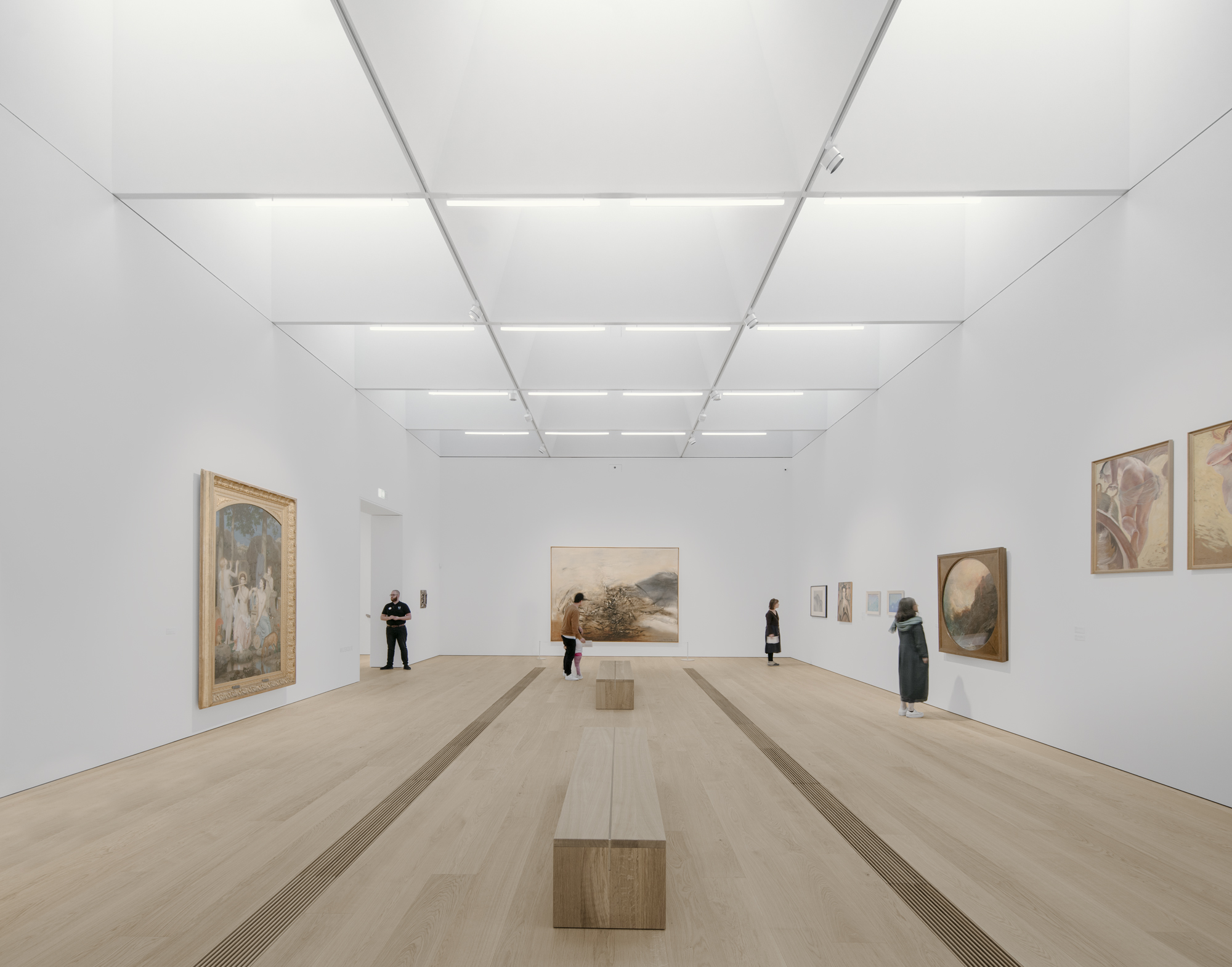
整个建筑立面相对封闭。为了保护藏品,博物馆面向铁路的南立面是封闭且内向的,而朝向公共空间的北立面则更加开放、通透和生动。
The overall building façade is relatively hermetic. In order to protect the collections, the museum has a closed, introverted façade to the railway side, to the south. A more open, permeable and animated façade characterizes the north elevation, towards the public space.
▼面向铁路的博物馆南立面封闭且内向 The museum has a closed, introverted façade to the railway side, to the south.
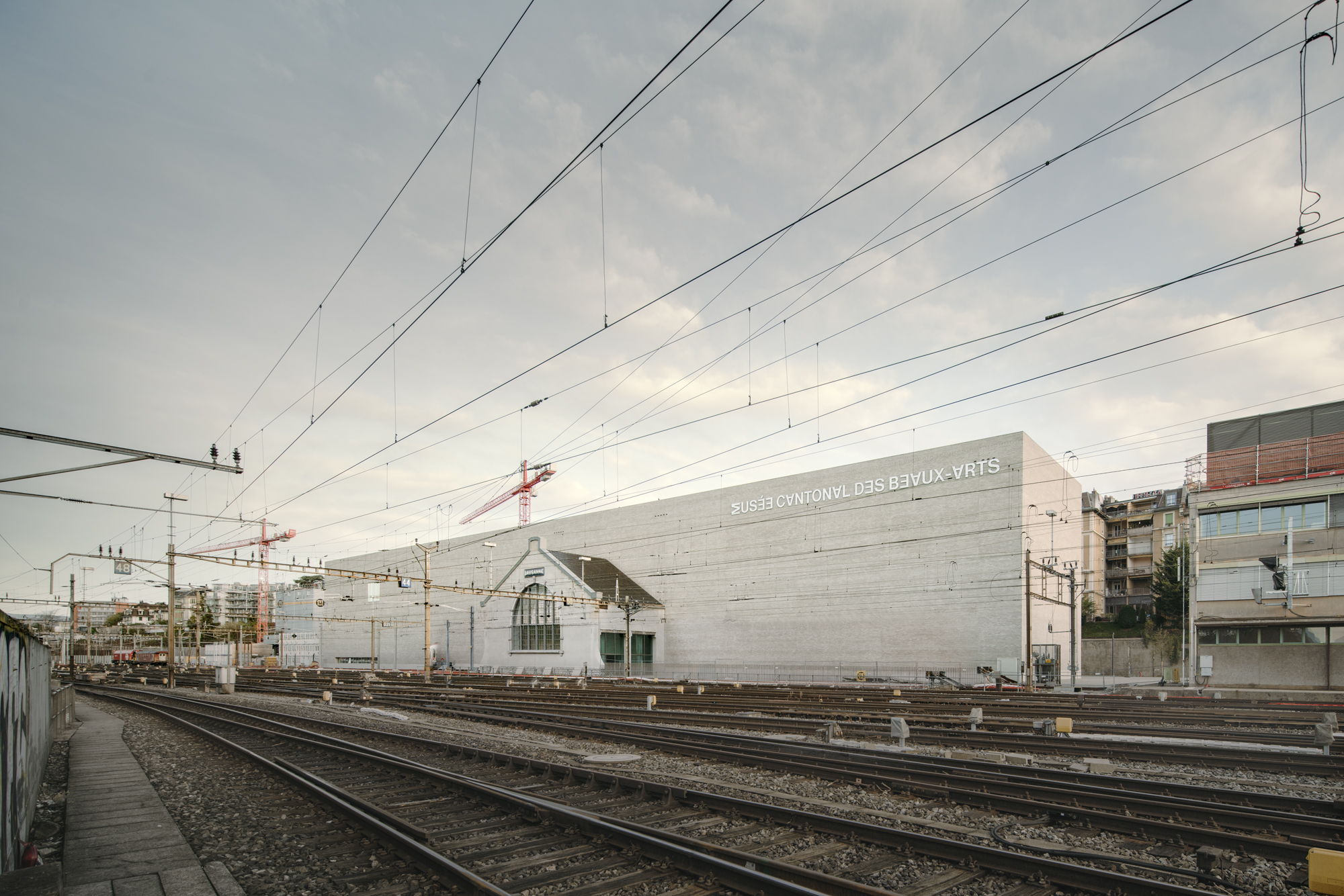
▼朝向公共广场的北立面开放、通透而生动 A more open, permeable and animated façade characterizes the north elevation, towards the public space.

建筑的砖砌立面呼应了基地的工业历史,也为整个建筑提供了充满活力的纹理图案。广场上,垂直百叶窗的节奏打破了巨石的体量厚重感,突出了建筑开口。晚上,这些百叶窗则充当画布向外漫射出博物馆室内的光线。
The brick façades evoke the industrial history of the site and offer a texture, a vibrant pattern to the monolith. On the square, the vertical blinds’ rhythm breaks the massiveness of the monolith and reveal the openings. At night, these blinds serve as a canvas to diffuse the interior light coming from the museum.
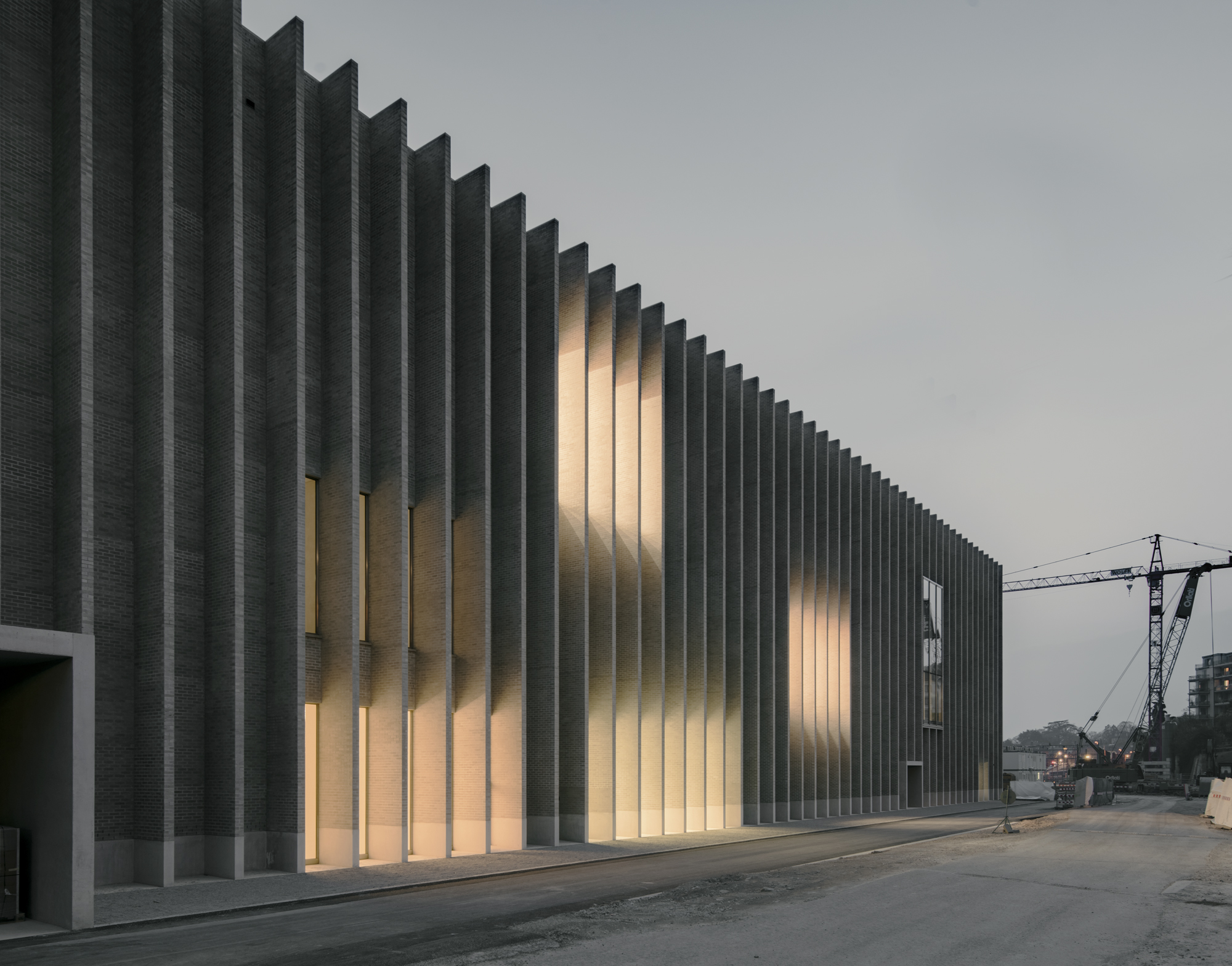


2019年4月5日,洛桑艺术博物馆正式交付。2019年10月5日,该博物馆举行了首次展览。
On the 5th of April 2019 the keys of the MCBA Lausanne were officially delivered to the Canton of Vaud. The museum opened its first exhibition on the 5th of October, 2019.

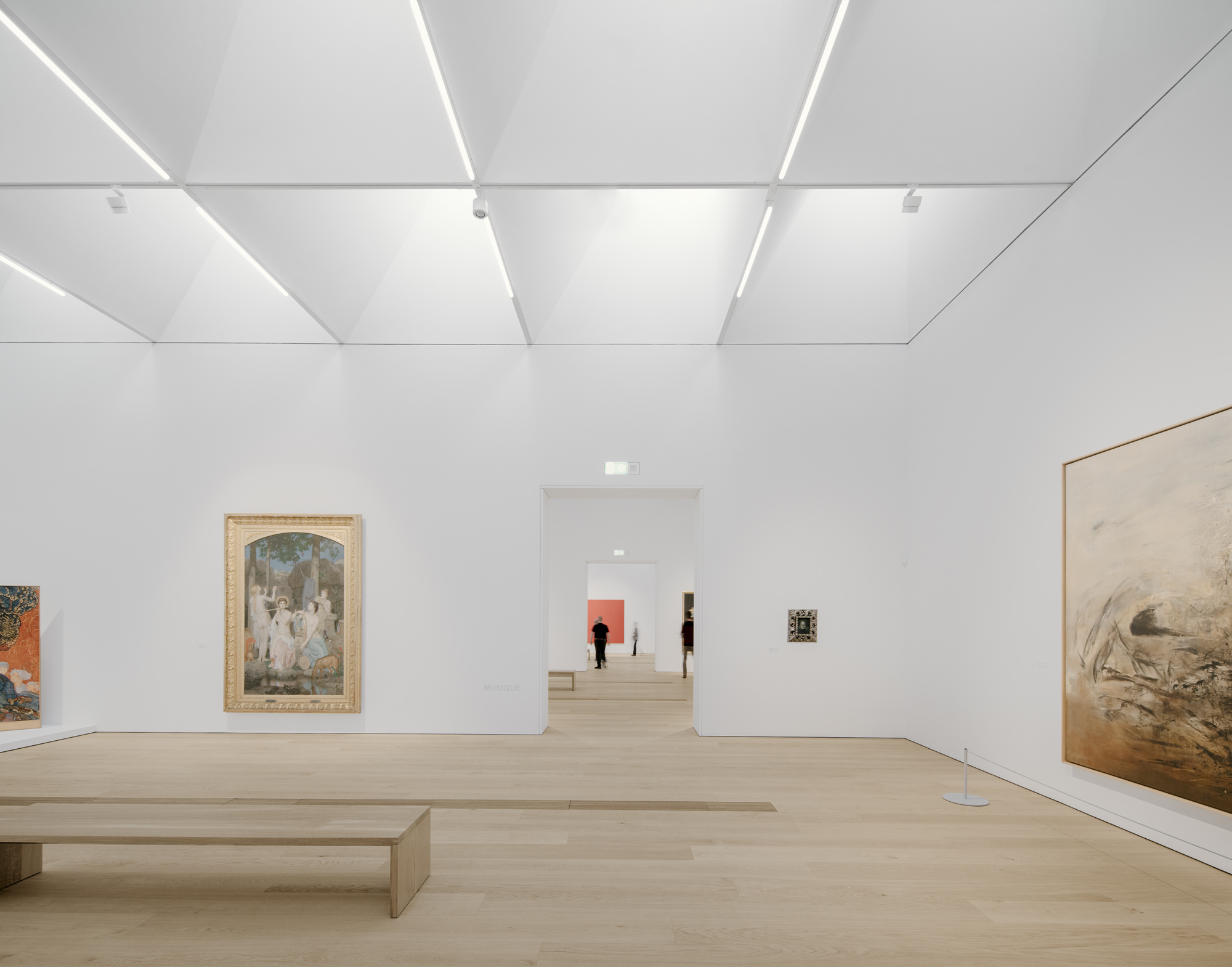

▼场地总平面 Site Plan.
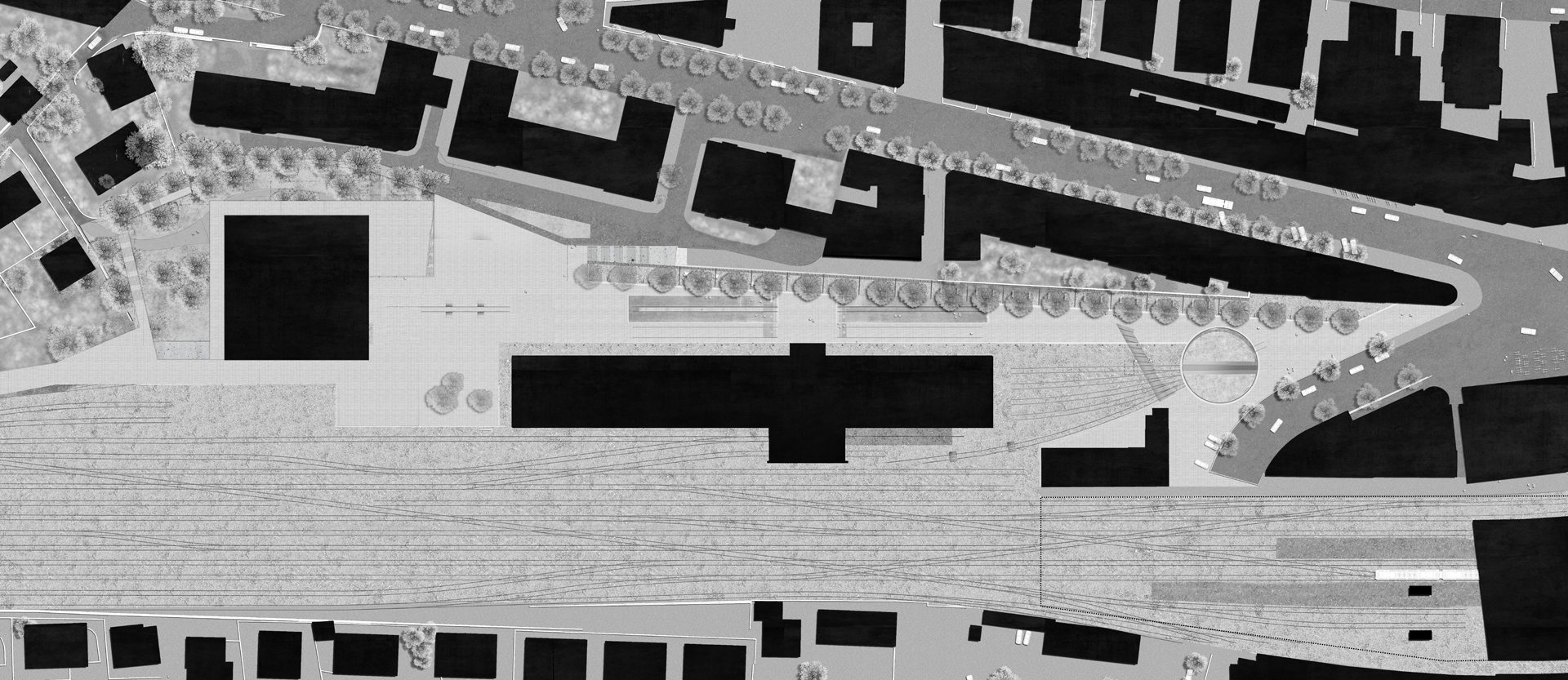
▼博物馆首层平面 Floor Plan – 0F.

▼博物馆二层平面 Floor Plan – 1F.
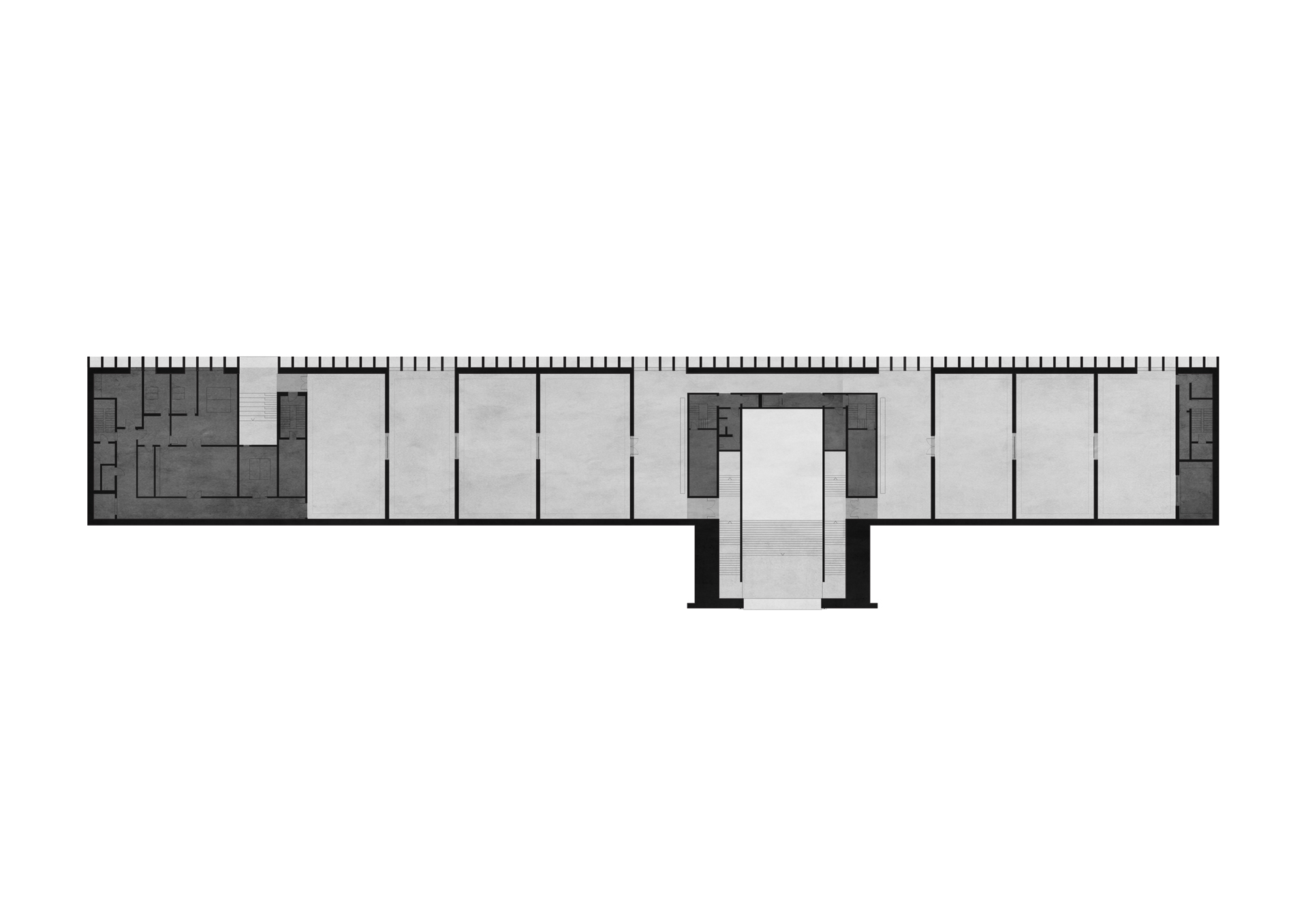
▼博物馆三层平面 Floor Plan – 2F.

▼博物馆南立面 South Elevation.

▼博物馆北立面 North Elevation.
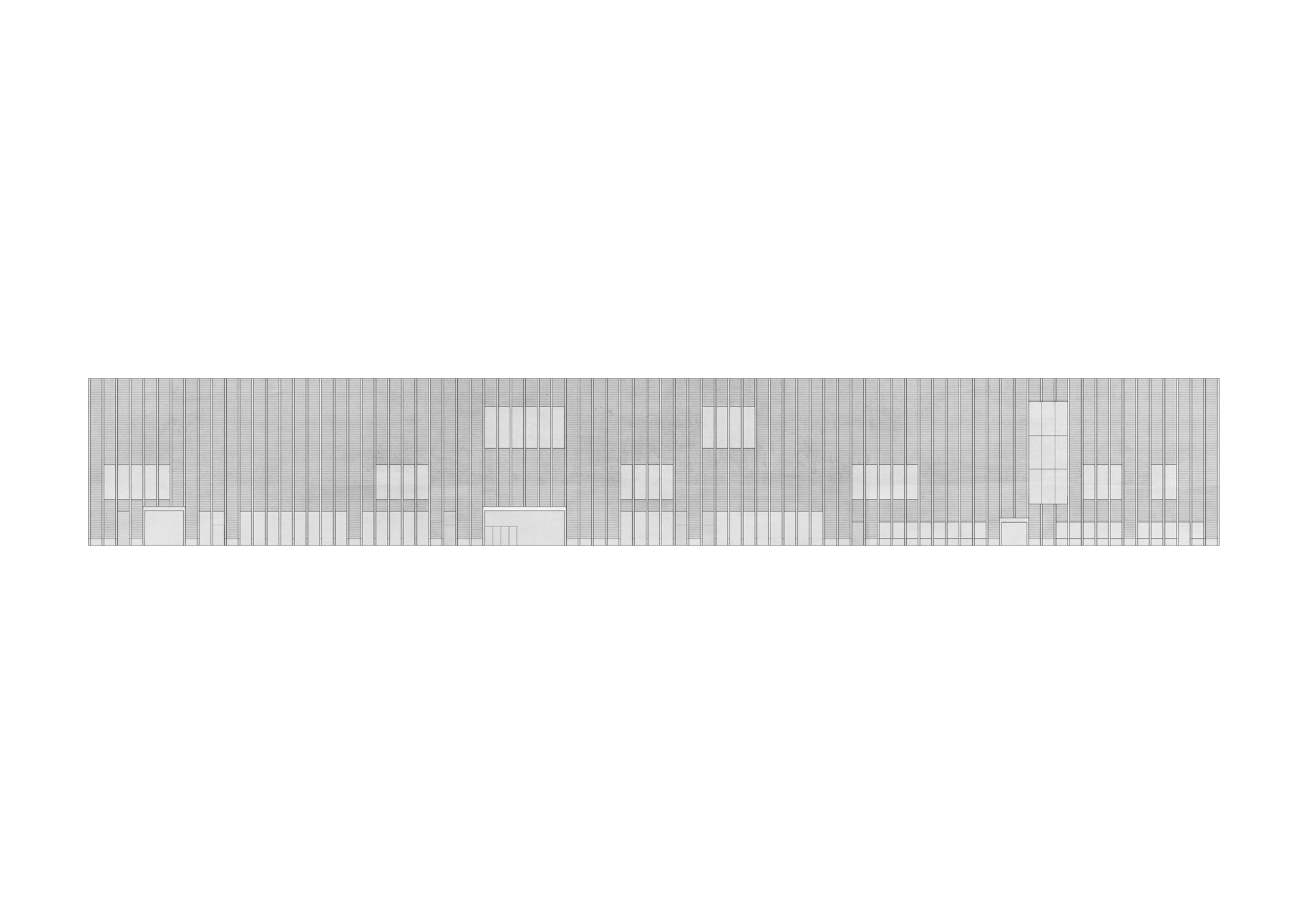
▼博物馆剖面图 Section.
项目:洛桑艺术博物馆
地址:瑞士洛桑市拉加尔广场161003
客户:Canton de Vaud; Direction générale des immeubles et du patrimoine; Architecture et Ingénierie cantonale (DGIP)
地址:瑞士洛桑市雷本广场1014号
建筑承包商:不同建筑元素来自不同构造商
设计:Barozzi Veiga
项目经理:Pragma Partenaires SA
执行阶段项目团队:Pieter Janssens, Claire Afarian, Alicia Borchardt, Paola Calcavecchia, Marta Grządziel, Isabel Labrador, Miguel Pereira Vinagre, Cristina Porta, Laura Rodriguez, Arnau Sastre, Maria Ubach, Cecilia Vielba, Nelly Vitiello, Alessandro Lussignoli
竞赛阶段项目团队:Roi Carrera, Shin Hye Kwang, Eleonora Maccari, Verena Recla, Agnieszka Samsel, Agnieszka Suchocka
结构顾问:Ingeni SA
建筑面积:6895平方米
场地面积:12449平方米
体积:82536 .94 立方米
设计开始:2011年
开工时间:2016年
完成:2019年
总造价:84,500,000瑞士法郎(建筑:64715,000瑞士法郎)
每平方米成本:6,626.91 瑞士法郎/平方米
Project: Musée cantonal des Beaux-Arts Lausanne
Address: Place de la Gare 16, 1003 Lausanne, Switzerland
Client: Canton de Vaud; Direction générale des immeubles et du patrimoine; Architecture et Ingénierie cantonale (DGIP)
Address: Place de la Riponne 10, 1014 Lausanne, Switzerland
Building contractor: Specific constructor for different construction elements
Planning: Barozzi Veiga
Project manager: Pragma Partenaires SA
Project team execution phase: Pieter Janssens, Claire Afarian, Alicia Borchardt, Paola Calcavecchia, Marta Grządziel, Isabel Labrador, Miguel Pereira Vinagre, Cristina Porta, Laura Rodriguez, Arnau Sastre, Maria Ubach, Cecilia Vielba, Nelly Vitiello, Alessandro Lussignoli
Project team competition phase: Roi Carrera, Shin Hye Kwang, Eleonora Maccari, Verena Recla, Agnieszka Samsel, Agnieszka Suchocka
Structural consultant: Ingeni SA
Floor area: 6,895m2
Built-up area: 12,449 m2
Volume: 82,536.94 m3
Start of planning: 2011
Start of construction: 2016
Completion: 2019
Total cost: 84,500,000 CHF (building: 64 715 000 CHF)
Cost per m2: 6,626.91 CHF/m2
更多 Read more about: Barozzi Veiga








0 Comments